Motorola Droid X: Thoroughly Reviewed
by Brian Klug on July 20, 2010 4:27 PM EST- Posted in
- Smartphones
- Motorola Droid X
- OMAP
- Mobile
Meet the Droid X
The X is big, eXtreme, even. In many ways, the X is Motorola’s EVO, sans 4G. Both pack 4.3 inch screens, but no keyboard. In fact, the X is slightly taller than the HTC EVO by 5.6 mm on paper (127.5 for the X, 121.9 for the EVO), which itself is impressive. That’s not to say it’s unusably large, or that the size is a problem, but it’s a big phone that commands big pockets.
Everything about the X seems like it can be followed up with a “that’s what she said.” The thing’s size, performance, how long it lasts - on battery of course. Seriously, you can mentally add that onto so many sentences, it seems as if the EVO and X are both answers to the proverbial question “why not?”
In reality, the 4.x” size screen phones seem a class of their own now, of which the EVO and X are newest members. Until we grow larger thumbs (genetic modification perhaps?) I think this is the upper limit for smartphone screen size until we get foldable screens. Any larger, and your thumb literally can’t sweep out far enough to reach the far corners of the screen. Anand has stated before that his cutoff size for when the tablet segment starts is at 5 inches; I think that’s right on the money.
The X increases the screen size of the original Droid, while maintaining the somewhat unique FWVGA 854x480 resolution of the original Droid (Motorola erroneously maintains this is WVGA), compared to the more standard WVGA 800x480 resolution of other Android devices. The result is that dot pitch is a bit higher on the X than the EVO. It’s interesting that Motorola is sticking to FWVGA - this is admittedly exactly 16:9 aspect ratio and excellent for anamorphic videos, but no doubt still gives developers a bit of pause.
The other major change the X brings is TI's OMAP 3630 SoC with a 1GHz CPU core, but more on that in a bit.
The X is also thin. Really thin. The majority of the device is 9.9 mm thick, while the top of the device is 1.4 cm. Motorola has made a tradeoff here - make the rest of the device thin and wide at the expense of a bulge in another location. That bulge, unsurprisingly, is the camera. The camera’s optical system simply requires a certain throw distance. Motorola could’ve made the entire device a uniform (and beefy) thickness, or do what it did and make a phone with a bit of a step.
The step isn’t a problem at all. I couldn’t feel it in my pocket, don’t think it’s ugly, and it has the added benefit of keeping most of the device propped up off of whatever surface it’s on. The result is that you won’t scratch the camera cover, won’t scratch the back of the device, and won’t have the device rock and roll from having a curved backside. The other positive is that when rested, the device is propped up at a few degrees.
But probably the biggest and most welcome change is that Motorola has ditched the ubiquitous capacitive buttons that have been an intermittent annoyance on some Android devices.
Some phones have pulled it off perfectly - the EVO’s buttons work fine, and the Motorola Droids that I’ve played with were perfect - but on others it’s a real scourge. On my Nexus One, the entire digitizer intermittently decides that keyboard presses map to menu, home, or back at times. Apparently I’m not alone either.
On the X, the row of buttons are the real uncut deal, and they’re perfect. There are really two sets of rocker buttons - the leftmost two is one rocker, the rightmost two are the other - but you won’t notice. They don’t jut out a lot, and don’t get pressed accidentally in the pocket. Right below the row of buttons in the center is one of three microphones on the X.
Up at the top of the X is the proximity sensor, notification LED and handset speaker. The proximity sensors are on the right side under the plastic, and the LED is on the left. There’s also the ambient light sensor up there.
On the right side of the phone are the volume up/down buttons, and the two level camera button. Motorola made a sort of big deal about their gold colored camera button on the original Droid, so I’m really confused why it’s a metallic red now. The volume rocker on the original Droid used to be stiff and problematic, the X’s is perfect. The camera button still requires a lot of force to click in all the way, and remains the only way to actually trigger camera capture.
Moving around to the other side are the Micro-USB and Micro-HDMI ports. They’re a bit close together - maybe I’m special, but more than once I found myself trying to plug the USB charger into the HDMI port on accident.
Up top, there’s the power/lock button, 1/8” headphone jack, and a second microphone port. The top is slightly tilted - thankfully the power button doesn’t stick out normal to this surface, but rather perpendicular with respect to the display. Otherwise it’d get worn in really odd and probably fail fast.
The bottom is where things are interesting. There’s the slightly raised 14 mm bulge where the camera and LED flash are, which rolls off over part of the battery door to the 9.9 mm thickness area. Finally, down at the bottom is the third of the X’s microphones, and a slit for the speakerphone. You can slide a fingernail in there, but there’s thankfully a fine mesh preventing pocket lint from collecting inside. The Motorola logo has some pattern to it, so it shouldn’t rub off.
In the Motorola Droid review, I talked a lot about the beefy metal battery door. I’m pleased to report that the X has one as well, and it slides on and off snug and secure, doesn’t creak, doesn’t vibrate. It’s solid. Under that door is battery - you have to pull up on a tab to get the battery out. Once it’s out, you can get to the preinstalled 16 GB microSD card. The card doesn’t have a push-click mechanism, it simply slides in and out.
My only complaint about this pull tab battery release arrangement is that you pull and rotate the battery about the wrong axis. The battery slides in and goes down along its long axis, while the tab pulls up and kind of pries the battery against the way it slides in. I could see someone - if they’re not careful - being aggressive and breaking something, but I’ve yanked the battery numerous times to get the SD card out and haven’t broken anything yet. Just be careful.
Looking carefully, there’s a gold contact switch next to the pull tab which clearly makes contact with the metal underside of the battery door. You can see where it’s made contact with the door and left a little mark as well. More on that later.
The plastic exterior on the X feels rubbery - it’s got a grippy tack that has lasted a few solid weeks of my greasy hands, and doesn’t slide around. On the front at the very top and very bottom, the plastic bits seem to actually be a stiff rubber. Not sure why you’d want those parts rubber, but they feel different and more rubbery.
Overall, the build quality of the X is solid. Motorola has pulled off two high end Android phones that really feel good and inspire a lot of confidence. There’s no give or play with any of the buttons, the volume buttons aren’t loose and broken out of the box like some Droids were, and the grippy plastic makes it feel even better. Again, I think having the phone tilt a few degrees and not rest completely flat on surfaces will help the back not get scratched up.


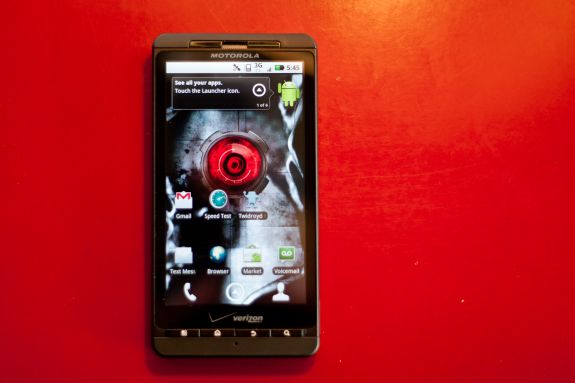
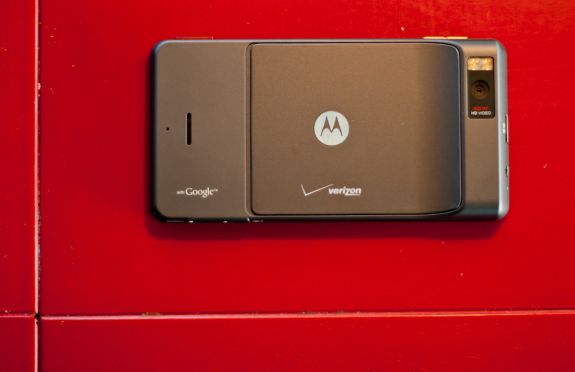
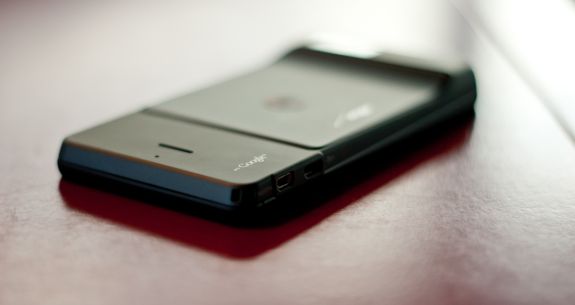
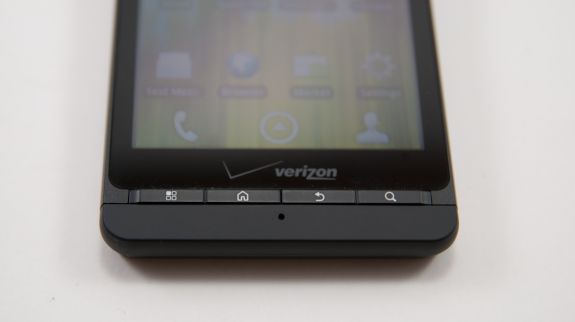


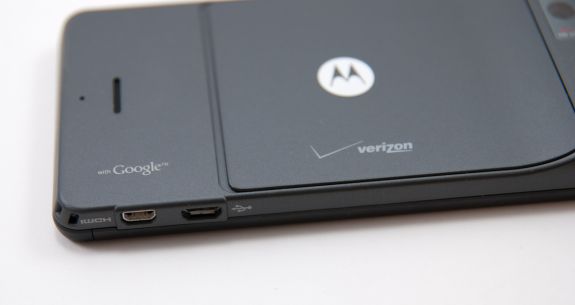
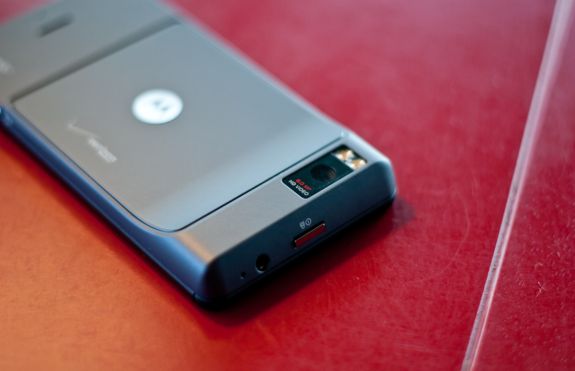
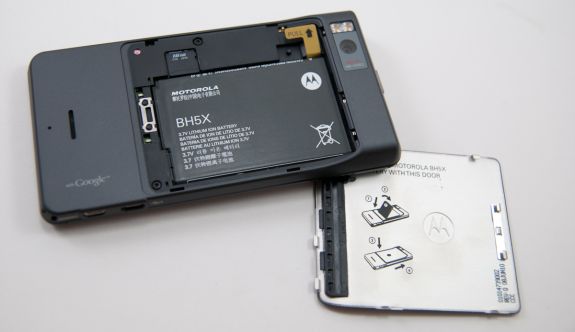









89 Comments
View All Comments
Jonathan Dum - Tuesday, July 20, 2010 - link
Thanks for the comprehensive and all around excellent review, but I have one caveat.As far as Android phones go, their multitouch screen controllers have tended to be sub par (try any multitouch on a nexus one, for example). I would like to know if there's any noticeable difference between these newest phones and older Android phones with capacitive screens.
As always, keep rocking these reviews, Anand. ;)
Frangible - Tuesday, July 20, 2010 - link
I've not used another Android device, but it's hypersensitive compared to my iPad/iPod Touch. Portrait keyboard mode drives me nuts. If the touchscreen were alive, I'd say it would have a degenerarive demyelinating disease. Unfortunately putting prednsone tablets on my Droid X does nothing.It's so twitchy I can blow away the Blur, Swype, and even a modded HTC keyboard with Graffiti (free from Android Market btw). And that's Graffiti with my *thumb*, in portrait or landscape. If I started using my Pogo stylus... oh, it would be*on*.
Clearly, others don't share my opinion, but the touchscreen on the Droid X is incredibly fruuuuustrating at times.
Frangible - Tuesday, July 20, 2010 - link
As a new Droid X owner, let me first say thanks for another great in-depth review, especially regarding the screeen details-- I just have to know these things, dammit.Anyway, just wanted to make two screen-related comments:
1. The outdoor screen comparison pics don't show any obvious transreflective displays. This either means none of them were, or they weren't angled in a way where a transreflective display would be obviously better.
FWIW, my iPod Touch Gen 1 has a TRD, and even my iPad's display is somewhat TRD (though with poorer contrast than the iPod or even a Tungsten TX in direct sunlight; a consequence of a lesser area of reflectivity, or the IPS display?) I don't know which of the iPhones have TRDs, but it would seem likely the iPhone 4G would be on par with the iPad.
Anyway, a TRD adds a LOT to outdoor viewing if you angle it correctly. You can even turn down, or off, the backlight.
The Droid X is certainly not TR, and was worse than my much dimmer Moto Q9C outdoors (due to the touch layer). And yeah sadly, the Tungsten Tx on min bright was better. So that's why I bring this up-- TRDs are the daywalkers of the LCD underworld, so imo this should be accounted for in outdoor comparisons.
2. I looked at the pixel structures of a variety of displays under a 100x light microscope. The Droid X's sub-pixels are divided into two sections, each with a black "hole". It looked quite similar to the PSP Go's subpixels, though with a standard RGB pattern and lack of the chevron textures on the PSP Go's. I assume this is some TN variant? Does anyone which kind?
The iPad's subpixels were divided into to halves of a series of stacked chevron color bars. Only the green subpixel had the "hole" (transistor?) which looked an awful lot like a mandlebrot fractal to me. FWIW.
ImSpartacus - Tuesday, July 20, 2010 - link
I always love reading ATech's reviews, but this one was especially wonderful.I laughed out loud at the following sentence:
"Everything about the X seems like it can be followed up with a 'that’s what she said.'"
Simply hilarious.
The0ne - Wednesday, July 21, 2010 - link
Yes, I especially love some of the very technical tests as well. For example...1. I let my wife use it for a day and she likes it...
2. I work in milliseconds so having a webpage load 1s makes any other phone besides iphone a no go
3. I have no fcking clue about real multi-tasking, although I know it's been around for decades, but I'll just demand for it and do a bat-shit review of it.
4. My wife and kids love it so it's an editor's choice! Go buy it.
5. It only has a few thousand apps, not the millions and millions of apps like iphone so it's crap, regardless if many of those millions of shtty apps and dictated.
Obviously, I'm exaggerating the comments to the extreme but the basis is there. While at it the review might as well include the orgasmic scene from the movie "When Harry met Sally."
honkj - Tuesday, August 17, 2010 - link
for anyone wondering why that survey showed iPhone owners get more sex...this "theone" guy pretty much shows how clueless and geeky and "lady" hating, some Android fanboys come off to the opposite sex.....
actually they just come off as hating anything that moves.
jasperjones - Tuesday, July 20, 2010 - link
a dozen comments already that point out the high quality of the review. it's getting boring. anyway, +1, excellent review. i've made critical comments on your smartphone reviews earlier this year. but the last couple of reviews were just awesome, and my confidence in AT is fully restored :)Hazdaz - Tuesday, July 20, 2010 - link
It is so nice to read a review that is more than just a corporate press release. Actually taking the time to really review a device and give us honest and very thorough information is what I love about this site.I just ordered my X and won't get it for a few days, but I tested all the usual suspects and felt that it was the right phone for me... assuming I can get used to the size.
I know there are a few people that mentioned the GalaxyS family of phones and I have to say that I really wanted to get one... they are slightly smaller in size than the X, but because of their curved shape, they felt even smaller - while still offering a 4" screen. And about that screen, well it did look great, but from all the hype, I was really expecting for it to be even better. Anyways, I really wanted to like the phone - and I was ready to settle on it actually, until I tested the call quality. HUGE let down there... I could barely hear the person on the other end of the phone call, and the speakerphone volume was terrible. Tried this test on more than one version of the GalaxyS and was quite let down.
The Incredible actually had the best sounding speakerphone that I have heard, it was quite loud - but alas I was looking for something a little bigger in size. The X had good volume - much louder than the GalaxyS - so that's the one I picked.
ImmortalZ - Wednesday, July 21, 2010 - link
The gold contacts on the battery door are a staple of Motorola designs since a long time. My old E6 and it's cousin the Z6 both have gold contacts to the battery doors. So does the RAZR line. In fact, I'll go as far as to say that nearly every one of their phones with a metal battery door has multiple contacts from the door to the phone.MacTheSpoon - Wednesday, July 21, 2010 - link
The review was spectacular in many ways, but I couldn't find anything about call quality. Does this thing actually perform well as a phone? Did people you talk to think you sounded good, and did they sound loud and clear to you as well? How did it compare to other phones?Was this info in there somewhere, and I just missed it?